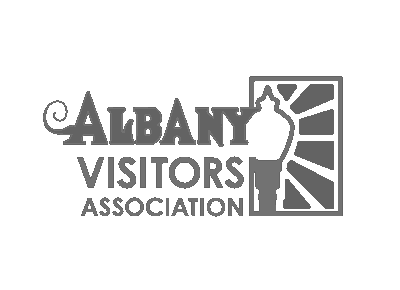Revenues are not keeping pace and community needs exceed available resources.
This situation took time to develop and is rooted in property tax ballot measures from the early 1990s which capped property tax revenues. As a result, money the City receives from property taxes is not keeping pace with inflation, population and development growth, and the increasing costs of City services. For the upcoming biennium (July 1, 2021– June 30, 2023), expenses were estimated to be about $5 million more than the revenues we take into the General Fund. The General Fund supports police, fire, municipal court, parks and recreation, library, planning, code enforcement, emergency planning, and more. Many cities throughout Oregon have addressed this structural gap through a combination of operating levies (charged based on assessed value and paid with property tax bills) or operating fees (charged based a set methodology and paid with utility bills).
Costs of services are increasing.
City services rely on people. Costs to provide service have increased as the cost of public sector retirement escalates — a cost over which the City has no direct control. The City also contends with rising costs of health insurance, software licenses, cybersecurity threats, compliance with state and Federal laws, labor, materials, and contracted services.
Other sources of funding are limited to specific services or projects.
For example, a portion of State-collected gas taxes helps pay for streets and bridges. Water fees paid by residents, businesses and other local customers can only be used to pay for new drinking water treatment, equipment, and pipes to get the water to your home and business.
Where did these revenue options, including a city services fee, come from?
In June 2019, the City Council adopted a balanced budget for BN 2019-2021. The City Manager noted that the budget included service level reductions in every City department and avoids any further reductions in the City’s reserve funds and general fund contingency.
City Councilors voiced the need to pursue revenue enhancement options and cost containment measures to address the projected worsening shortfalls in future biennia.
The following month, the City Manager presented a list of revenue enhancement options and cost containment measures for the Council’s consideration and feedback. The Council requested more information on most of the items but ruled out several options including a payroll tax, a parks operating levy, under-levying the Central Albany Revitalization Area district, combining the parks and library departments, establishing a parks and recreation district, and closing City Hall one day per week. Regular discussions with Council regarding revenue enhancement options and cost containment measures continued through the Fall of 2019.
City Council requested more information on a service fee option as the preferred method to fund City services, share cost of service among Albany residents, commuters, and businesses, and provide the most flexibility in raising revenue.
At a November 2019 work session, Council received a presentation on the feasibility of a service fee. The presentation outlined the challenges with General Fund revenues to maintain current service levels and scenarios and structures for fee.
At a March 2021 meeting, Council directed staff to prepare one of the fee structure options for implementation if needed. Council could decide to enact a fee at any amount, including at $0.
At a May 2021 Albany Budget Review Committee meeting, the BN 2021-2023 City of Albany budget was approved and moved to the City Council for adoption. This budget contains no additional funding to address the current shortfall. Cuts will be made in the fire, library, parks, and police departments.
In June 2021, the Council adopted a city services fee.
Timeline
| Time period | Activity |
|---|---|
| 1990s | Oregon voters approve permanent property tax rates and limits to annual growth in property tax revenue. Costs of providing City services are separated from revenue for those services. In Albany, this includes programs and services in Police, Fire, Municipal Court, Library, Parks and Recreation, and Planning. |
| 2010 Census | Albany has a population of 50,158 residents, which presents a resident to staff ratio of 212:1 in General Fund departments. Staffing largely determines the City's ability to provide the programs and services that residents have come to expect but also represents the City's greatest expense within General Fund departments. |
| 2009-2013 |
Albany cuts positions from its General Fund budget in response to the economic impact of the Great Recession on revenues, including 6.6 FTE from Parks & Recreation (21% of total department staff) |
| August 2018 | "Albany Vital Signs" presentation by Peter Troedsson to the Albany Chamber of Commerce |
| January 24, 2019 | Budget Review Committee Work Session City manager provides an update to the committee on the development of the City's first biennial budget, BN 2019-2021. With biennial budgeting, the City is forced to look farther into the future than before. He notes that despite an increase in property tax receipts, expenditures continue to outpace revenues, and the City is not as well positioned to endure another recession like the one seen in 2009-2013. Rising costs in PERS, health insurance premiums, contractual services, and other factors that are largely outside of the City's control make it increasingly difficult to maintain programs and services. |
| April 2, 2019 | Budget Review Committee Work Session Presentation |
| May 7, 2019 |
Budget Review Committee Meeting |
| May 9, 2019 | Budget Review Committee Meeting |
| May 14, 2019 | Budget Review Committee Meeting |
| May 20, 2019 |
City Council Work Session |
| June 2019 | Greater Albany Public School District reaches an agreement with the City of Albany to fund Maple Lawn Preschool for three years with an option to add two additional years. The City budget still reflects cuts in aquatics, park maintenance, police, fire, and other City departments. Parks & Recrreation Department staffing down 22% since 2009. |
| June 12, 2019 |
The City Council adopts a balanced budget for BN 2019-2021. The City Manager notes that it includes service level reductions in every City department and avoids any further reductions in the City's reserve funds and general fund contingency. City Councilors voice the need to pursue revenue enhancement options and cost containment measures to address the projected worsening shortfalls in future biennia. |
| June 2019 | Increases to franchise fees and implementation of other measures |
| July 22, 2019 | City Council Work Session Revenue Enhancement and Cost Containment discussion. City manager presented list of revenue enhancement options and cost containment measures for the Council's consideration and feedback. The Council requested more information on most of the items but ruled out several options including a payroll tax, a parks operating levy, under-levying the Central Albany Revitalization Area district, combining the parks and library departments, establishing a parks and recreation district, and closing City Hall one day per week. |
| July 2019 | Coffee with the City Manager outreach event at Allann Bros. |
| August 14, 2019 | Police Chief notifies the City Council of plans to freeze positions in dispatch and records in order to fill police officer positions. |
| August 28, 2019 | City manager presents revised revenue enhancement options and cost containment measures to the City Council based on prior feedback. |
| October 9, 2019 | City manager presents a further refined list of revenue enhancement options and cost containment measures to the City Council. |
| November 18, 2019 | Initial utility fee presentation from staff using info from Galardi Group |
| November 19, 2019 | Community Conversation at Ciddici's Pizza with City Manager Troedsson |
| December 2, 2019 | City Council Work Session Utility fee discussion |
| December 4, 2019 | City Council Meeting Continued utility fee discussion |
| February 2020 | Coffee with the City Manager outreach event at Riverfront Community Center (formerly the Albany Senior Center) |
| February 4, 2020 | Community Conversation at The Barn with City Manager Troedsson |
| March 2020 - Present | 41% of Parks & Recreation staff impacted by furloughs (fulltime, part time, partial and/or sporadic) |
| March - September 2020 | Park restrooms and COOL! Pool remain closed for the summer as Parks & Recreation unable to afford to open with COVID restrictions. |
| March - December 2020 |
The City applies for reimbursement and receives CARES Act funding to offset expenses incurred responding to the COVID-19 pandemic. These one-time funds must be used for COVID-19 response and cannot be used to replace lost revenues due to facility or program closures. Park irrigation and mowing schedules modified to save funds. |
| July 20, 2020 | City Council Work Session City Manager presents projected budget impacts for BN 2021-2023. |
| July 22, 2020 | City adopts increase in Parks and Recreation fee schedule to reduce funding gaps within the department. |
| September 21, 2020 | City Council Work Session City manager presents a utility fee framework and receives council direction to proceed in developing the utility. He notes that Council will still need to make many decisions related to the design of a utility fee, possible fee levels, and ultimately, whether to implement one at all. |
| September 30, 2020 | Parks and Recreation lays off an additional 1.5 FTE due to budget. |
| October 26, 2020 | Budget Review Committee Work Session Committee members receive a presentation on the history of compression, an update on PERS obligations, and an update from the City Manager on the state of the City's budget projections for BN 2021-2023 and efforts to balance revenues and expenditures. |
| October 28, 2020 | City Council approves procurement for consulting services for utility fee development. |
| November 2020 | City staff begins work with consultant to research and design various options for utility fee methodology and sample fee levels in comparison to other Oregon cities. |
| 2021 | Albany has a population of 56,978, which presents a resident to staff ratio of 239:1. |
| January 2021 | Parks and Recreation eliminates the adult sports league program and eliminates 1 FTE due to budget. Staffing down 31% since 2009. |
| February 15-16, 2021 | City Council Special Session - Virtual Retreat Series Part 1 / Part 2 Department directors outline budget challenges in the upcoming biennium for their departments and potential impacts on services. |
| February 22, 2021 | City Council Work Session City services utility fee discussion |
| March 2021 | City receives notification of American Rescue Plan Act (ARPA) funds, with Albany's allocation anticipated to be around $9 million. Staff begins research to determine allowed use of ARPA funds. |
| March 24, 2021 | City Council gives direction to staff on the methodology to be used in developing a city services fee to support general fund programs and services. City manager reiterates that it is still unclear how ARPA funds can be used and notes that one-time funds will not resolve the structural imbalance between revenues and expenditures that existed prior to the pandemic. |
| June 2021 | City Council adopts a city services fee. |
| July 2021 | Parks and Recreation eliminated one River Rhythms Concert from the series moving forward due to budget limitations. |
| 2045 | Albany population forecasted to be 71,835, representing a resident to staff ratio of 302:1, assuming no change in General Fund staffing levels from 2021. |


